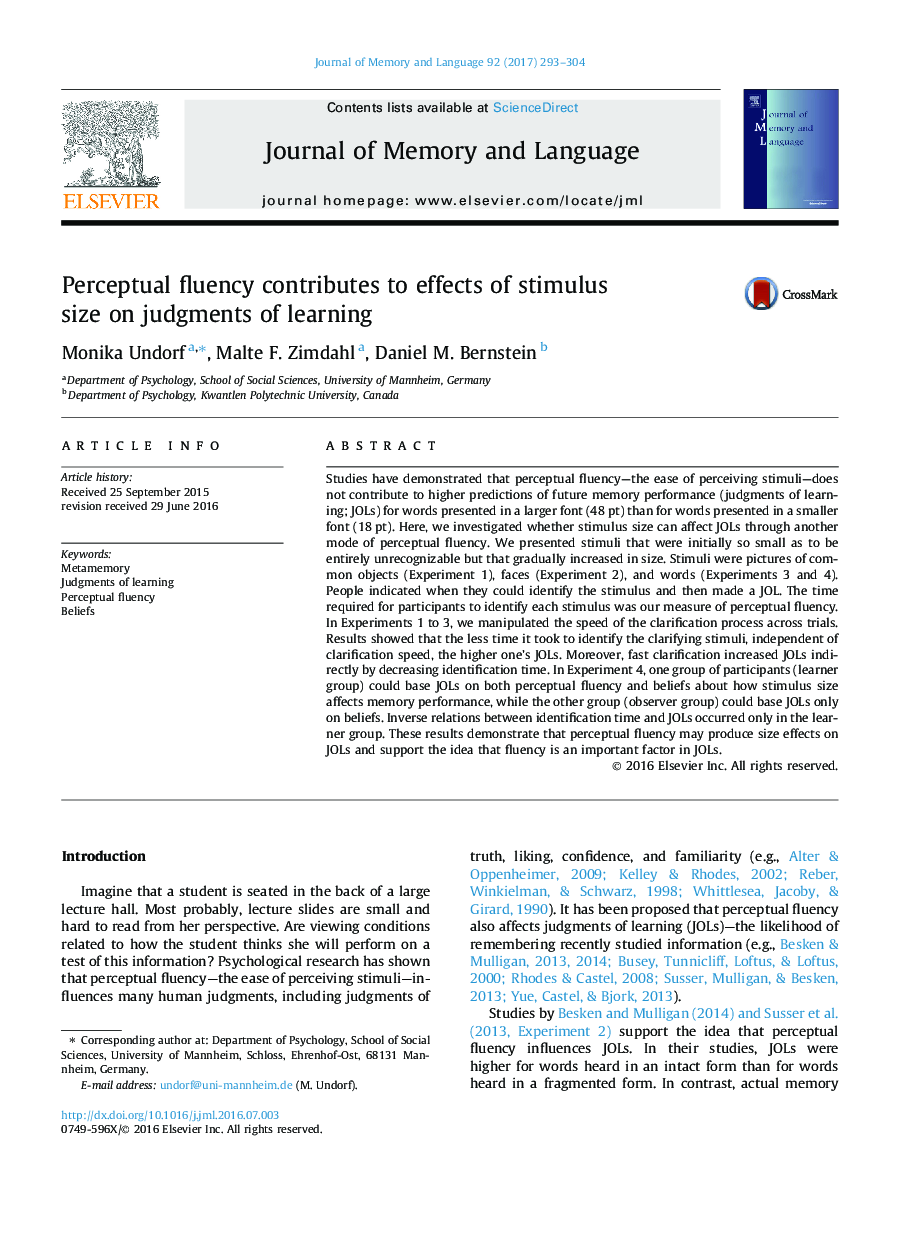| Article ID | Journal | Published Year | Pages | File Type |
|---|---|---|---|---|
| 931750 | Journal of Memory and Language | 2017 | 12 Pages |
•Stimulus size affected perceptual fluency.•In turn, perceptual fluency increased judgments of learning.•Beliefs about memory cannot account for this size effect.•Fluency is an important factor in metacognitive judgments.
Studies have demonstrated that perceptual fluency—the ease of perceiving stimuli—does not contribute to higher predictions of future memory performance (judgments of learning; JOLs) for words presented in a larger font (48 pt) than for words presented in a smaller font (18 pt). Here, we investigated whether stimulus size can affect JOLs through another mode of perceptual fluency. We presented stimuli that were initially so small as to be entirely unrecognizable but that gradually increased in size. Stimuli were pictures of common objects (Experiment 1), faces (Experiment 2), and words (Experiments 3 and 4). People indicated when they could identify the stimulus and then made a JOL. The time required for participants to identify each stimulus was our measure of perceptual fluency. In Experiments 1 to 3, we manipulated the speed of the clarification process across trials. Results showed that the less time it took to identify the clarifying stimuli, independent of clarification speed, the higher one’s JOLs. Moreover, fast clarification increased JOLs indirectly by decreasing identification time. In Experiment 4, one group of participants (learner group) could base JOLs on both perceptual fluency and beliefs about how stimulus size affects memory performance, while the other group (observer group) could base JOLs only on beliefs. Inverse relations between identification time and JOLs occurred only in the learner group. These results demonstrate that perceptual fluency may produce size effects on JOLs and support the idea that fluency is an important factor in JOLs.
